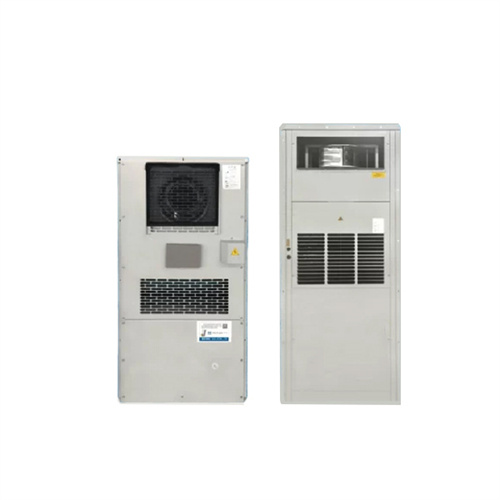How are energy storage containers made

Energy storage
OverviewHistoryMethodsApplicationsUse casesCapacityEconomicsResearch
Energy storage is the capture of energy produced at one time for use at a later time to reduce imbalances between energy demand and energy production. A device that stores energy is generally called an accumulator or battery. Energy comes in multiple forms including radiation, chemical, gravitational potential, electrical potential, electricity, elevated temperature, latent heat and kinetic. En

How a sand battery could transform clean energy
A small commercial application of a new energy storage system rarely becomes a hot topic, but the sand battery has attracted attention for its potential to even out the power supply from renewable

Battery Energy Storage Systems (BESS): The 2024 UK
By definition, a Battery Energy Storage Systems (BESS) is a type of energy storage solution, a collection of large batteries within a container, that can store and discharge electrical energy upon request. The system serves as a buffer

Containerized Battery Energy Storage System (BESS):
Containerized Battery Energy Storage Systems (BESS) are essentially large batteries housed within storage containers. These systems are designed to store energy from renewable sources or the grid and release it

New containerised battery energy storage systems boost drive to
The expansion. The partnership now creates three different types of converted container for use in battery-led energy applications. From relatively basic battery storage units containing air

Battery Energy Storage System (BESS) | The Ultimate Guide
A battery energy storage system (BESS) captures energy from renewable and non-renewable sources and stores it in rechargeable batteries (storage devices) for later use. A battery is a

Energy storage: what it is and how it works | Enel Green Power
Energy storage is a technology that holds energy at one time so it can be used at another time. Building more energy storage allows renewable energy sources like wind and solar to power more of our electric grid .

Energy storage container, BESS container
What is energy storage container? SCU uses standard battery modules, PCS modules, BMS, EMS, and other systems to form standard containers to build large-scale grid-side energy storage projects. The standardized and

Battery Energy Storage Systems (BESS) 101
Learn how battery energy storage systems (BESS) work, and the basics of utility-scale energy storage. A battery is made up of lithium cells, wired together to create a module. Enclosures come in different shapes and sizes but are

Battery storage container | Power capacities to suit
With a GivEnergy battery storage container, you can house your critical battery assets securely. We can neatly package your large-scale commercial battery storage system in a custom-built container – giving you unparalleled flexibility

Battery energy storage system
Tehachapi Energy Storage Project, Tehachapi, California. A battery energy storage system (BESS), battery storage power station or battery energy grid storage (BEGS) or battery grid storage is a type of energy storage technology

6 FAQs about [How are energy storage containers made ]
What is energy storage?
Simply put, energy storage is the ability to capture energy at one time for use at a later time. Storage devices can save energy in many forms (e.g., chemical, kinetic, or thermal) and convert them back to useful forms of energy like electricity.
What is a containerized battery energy storage system?
Containerized Battery Energy Storage Systems (BESS) are essentially large batteries housed within storage containers. These systems are designed to store energy from renewable sources or the grid and release it when required. This setup offers a modular and scalable solution to energy storage.
How can energy be stored?
Energy can also be stored by making fuels such as hydrogen, which can be burned when energy is most needed. Pumped hydroelectricity, the most common form of large-scale energy storage, uses excess energy to pump water uphill, then releases the water later to turn a turbine and make electricity.
What are the different types of thermal energy storage systems?
Classification of thermal energy storage systems based on the energy storage material. Sensible liquid storage includes aquifer TES, hot water TES, gravel-water TES, cavern TES, and molten-salt TES. Sensible solid storage includes borehole TES and packed-bed TES.
How is heat stored?
Storage of heat is accomplished by sensible and to a lesser extent latent thermal energy storage in many applications, and less research is available on chemical and thermochemical heat storage. The key enabling technologies in most storage systems are in systems engineering and material science.
How do thermal energy storage systems work?
In buildings where electrical heating and/cooling is used during the day, thermal energy storage systems can be used to reduce cost of electricity by storing thermal energy, produced using electricity during low-rate periods, and using it at peak times.
Related Contents
- How to calculate the heat generation of energy storage containers
- How to discharge solar energy storage fluid
- How to connect the leakage protection of the energy storage cabinet
- How to calculate the output power of the energy storage cabinet
- How to use photovoltaic power generation without energy storage
- The role of energy storage containers
- How to extinguish fire in distributed energy storage cabinets
- How to use the Xingyao Energy storage cabinet
- How to reset the energy storage cabinet
- How to charge lithium batteries in energy storage power stations
- Customized wholesale of energy storage containers
- How to calculate the price of factory energy storage cabinets